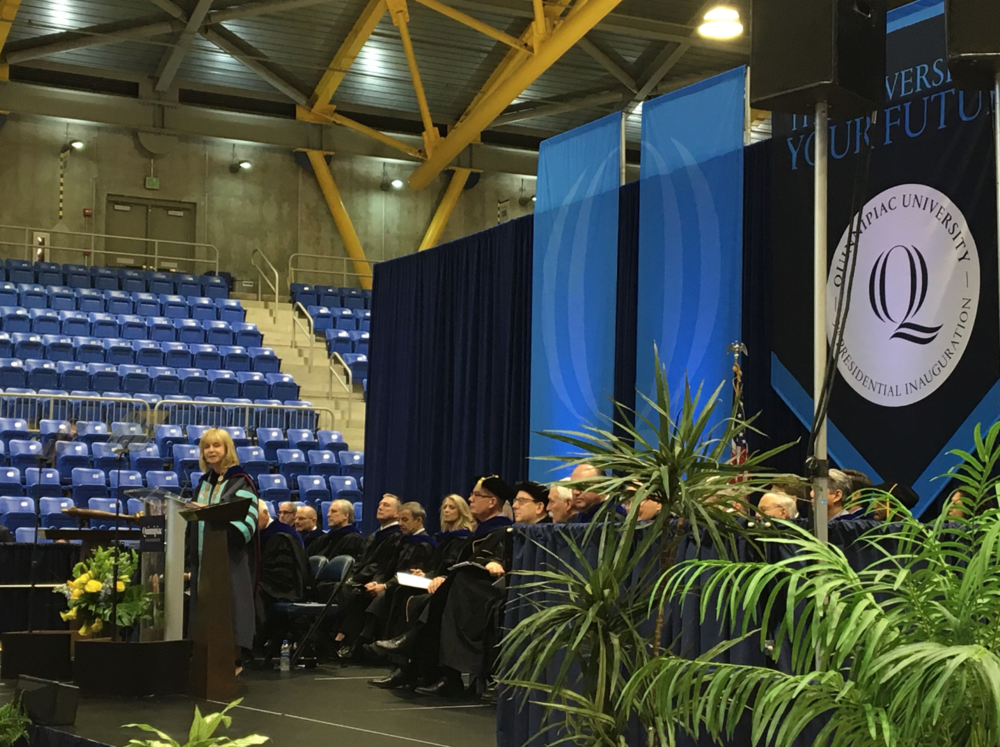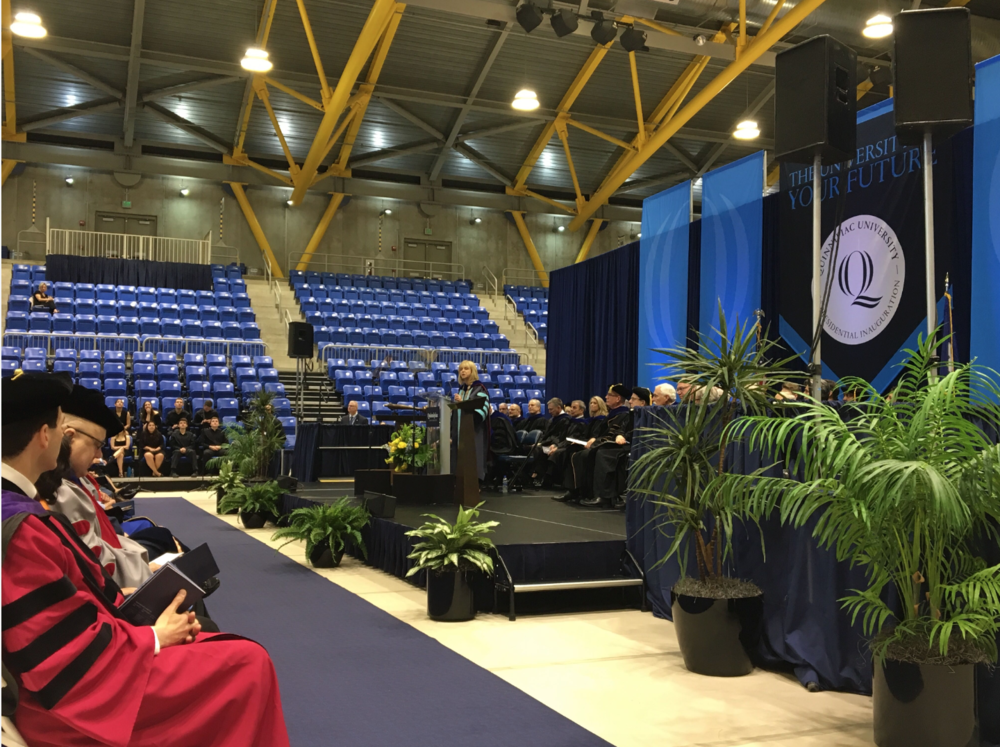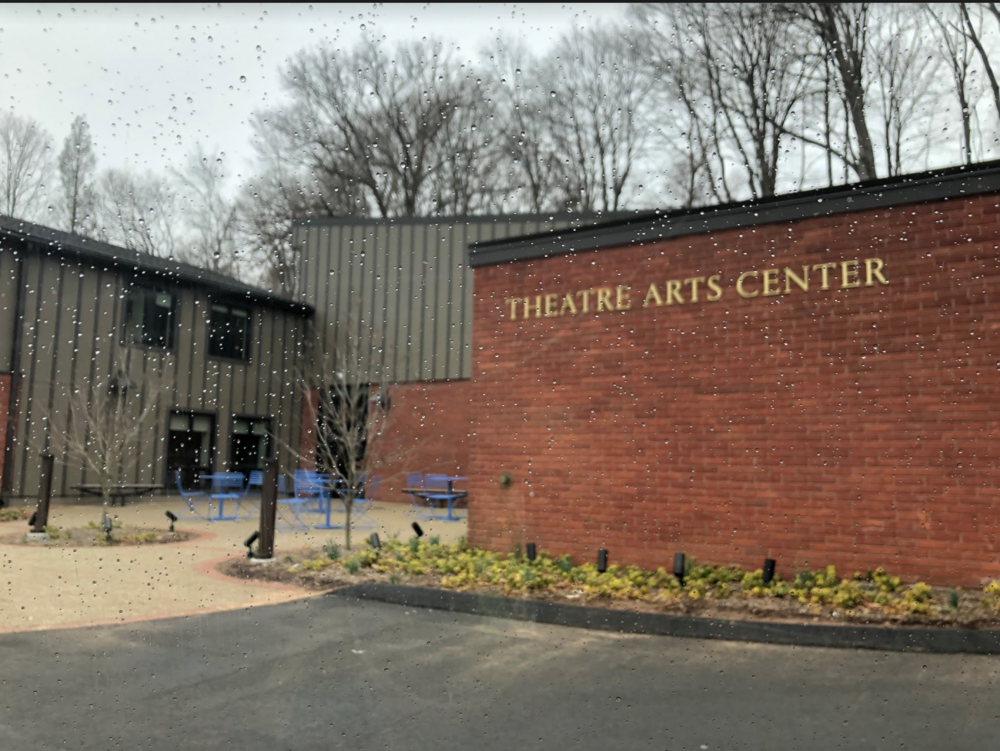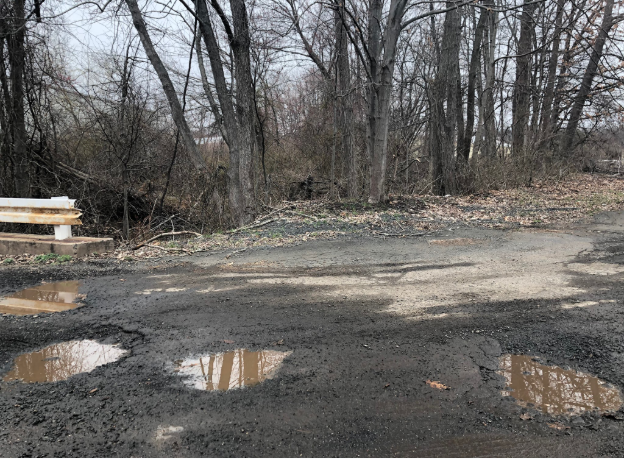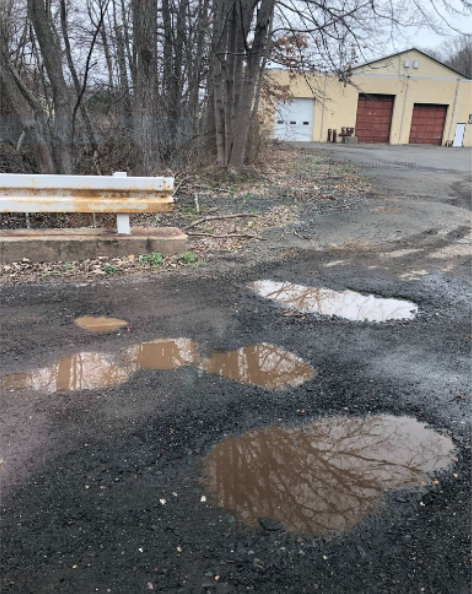Beneath the flurry of caps and gowns, tassels and sashes brims an undeniable anxiety that is alive within every Quinnipiac student approaching graduation day. With three weeks left till that prospective date, such fear is rising to the surface and threatening to boil over.
Considering the theme for this week’s presidential inauguration is “Your Future,” Quinnipiac’s next batch of graduates can’t help but think about theirs.
“I am scared,” QU alum and Ted Talk speaker, Lauren Cantu said in the opening of her recent speech. Taking place Tuesday, April 30, Cantu’s talk was the first of four speeches in a lineup dedicated to the dilemmas that lay ahead. Her’s specifically dealt with the the well-being of physicians as well as the potential for burnout in her future career.
“I am scared for my future,” Cantu said. She’s not alone.
Like Cantu, another QU alum Anthony Allen voiced concerns in his own Ted Talk about communities and sustainability.
“We’re facing some big challenges and systemic failure today,” Allen said. “We urgently need a new approach and a new perspective.”
As of Wednesday, May 1, Quinnipiac heard from someone offering just that.

The People’s United Center before guests’ arrival
During the inaugural celebration of Quinnipiac’s first female President Judy Olian, she spoke to these concerns. She also presented an array of solutions and addressed possible ways to secure a future that is bright for all who seek it.
She started with what Quinnipiac can do as an institution of higher learning, for both its students and the larger community they will soon become apart of. When Olian was named as the university’s ninth president just over a year ago, she was tasked with creating a strategic plan for the university’s future.
“Here we are– this relatively small school with this giant ambition,” Olian said in Wednesday’s speech. “I believe we have the potential to define a piece of the landscape of higher education.”
Just how does she plan to make Quinnipiac an institution of excellence? The truth is, it’s a work in progress. It’s work that is never fully done, but constantly underway.
“In the spirit of constant beginnings, the strategic plan in process over the last eight months has resulted in an exciting vision for Quinnipiac that builds the bridges to our shared future,” Olian said.
This vision is one that hinges on several factors: distinctive academic programming, nurturing internal and external communities and inclusive excellence.
“We will aspire to become a community that’s built on trust, openness and stability,” Olian said. “One that can have honest conversations about difficult subjects and that cares for and elevates marginalized members of society.”
Olian mentioned the importance of celebrating the differences within the community and welcoming members of underrepresented groups. This includes first-generation students, LGBTQ members, veterans and individuals from various socioeconomic backgrounds.
Along the same lines of diversity and inclusivity, students and faculty alike were thrilled enough at the prospect of having Olian as the university’s very first female president.
“It’s a landmark celebration– this is really exciting for Quinnipiac,” professor of women studies Melissa Kaplan said. “I think having inclusive excellence and celebrating diversity is the hallmark of any higher educational institution and I’m excited to be apart of her vision for the future.”
QU alum and masters student Brian Koonz was also in attendance. At the age of 53, Koonz is working on his graduate degree while also working as an adjunct in the school of communications. Like Kaplan, he appreciates and stands in support of Olian’s vision.
“It’s a powerful and pivotal moment in the university’s history,” Koonz said. “It’s a time of transformative change, not just for higher education as a whole, but really for Quinnipiac.”
Beza Indashaw, senior health science studies and pre-med student agreed wholeheartedly.
”I think we’re heading towards the right direction,” Indashaw said. “Trying to make this a more inclusive community is big for us, and her ideals are something I think Quinnipiac needs right now.”
Such ideals include an emphasis on lifelong learning, openness and the ability to embrace and effect change when necessary.
“I like higher institutions who are able to pivot with relative ease to the opportunities of the future,” Olian said. “That combination of comprehensiveness with focus, warmth and embracive change, are the contours of Quinnipiac distinctiveness and they drew me to this unique institution.”
In addition to the great potential Olian sees in the university, she also recognizes that complex problems and effective solutions are best approached by teams with a variety of perspectives. She admitted in her speech that there is still a ways to go.
“We are not yet where we need to be as an inclusive institution– not in faculty or staff, not in students or alumni, not in programming. We aspire to be more,” Olian said. “The university of the future cannot be a replica of what it was yesterday, or even what it is today.”
None of the changes Olian proposed will be achieved by looking back. As someone taking the reins from former president of 31 years John Lahey, Olian shows no signs of doing so.
Many, including Koonz, are excited to see her at work.
“We look forward to seeing what the future of Quinnipiac University has for us under her guidance.”
